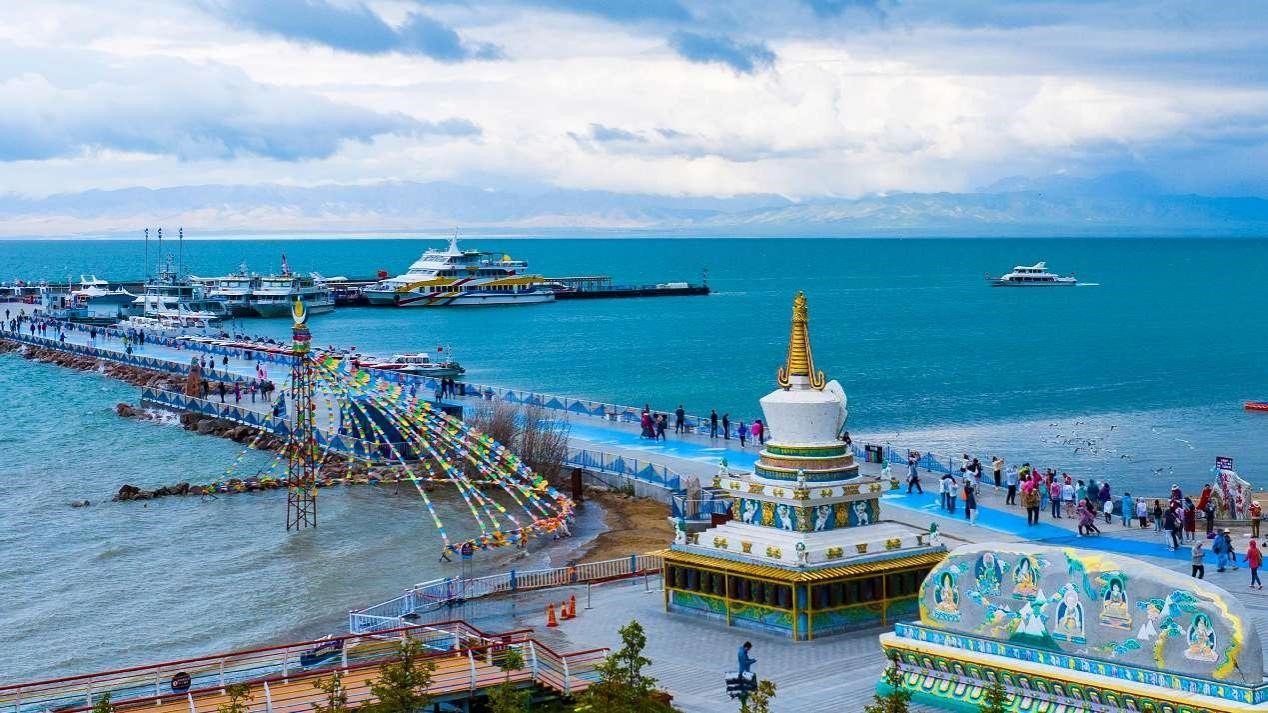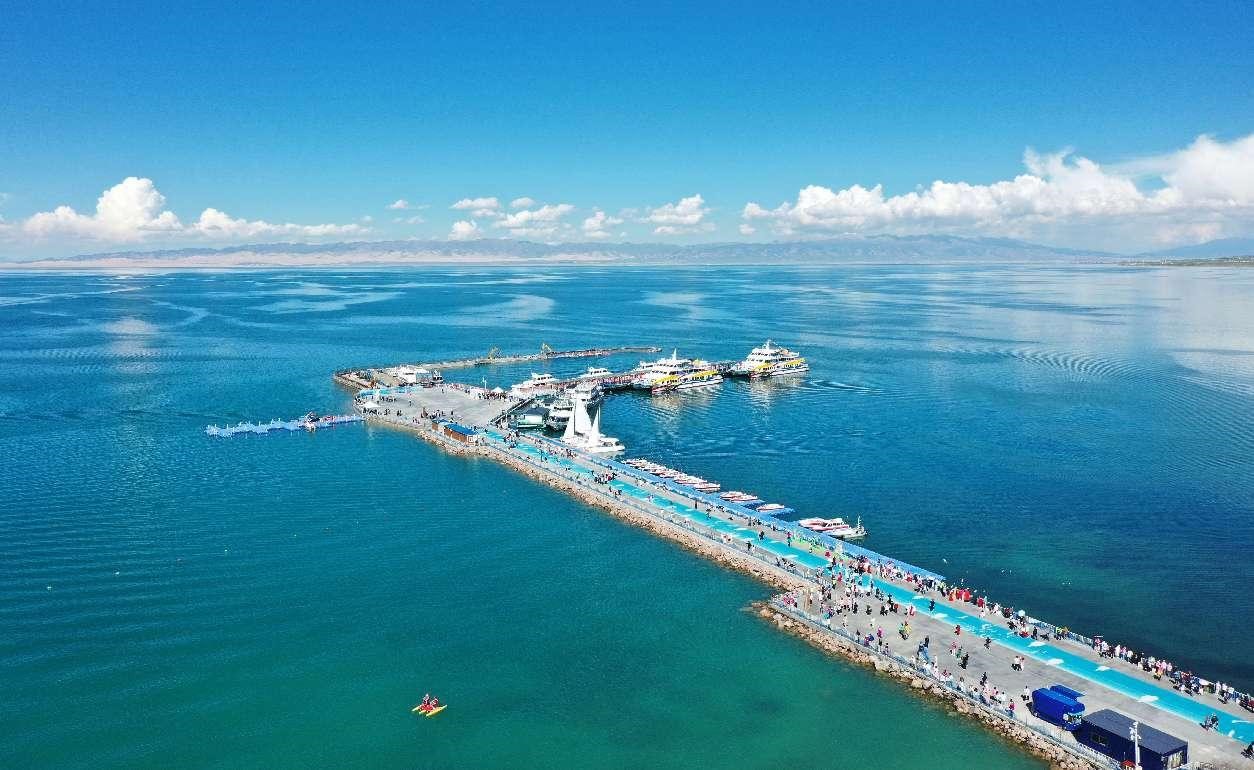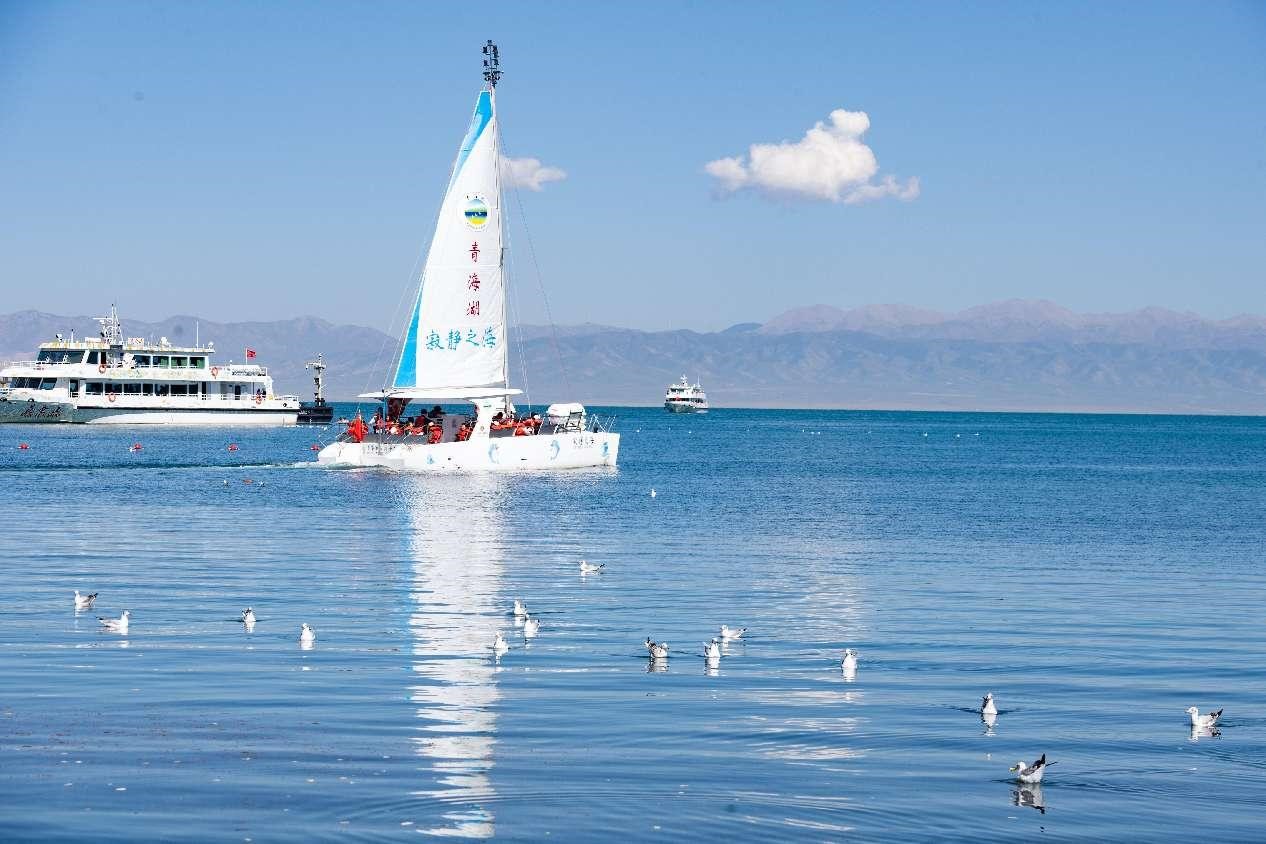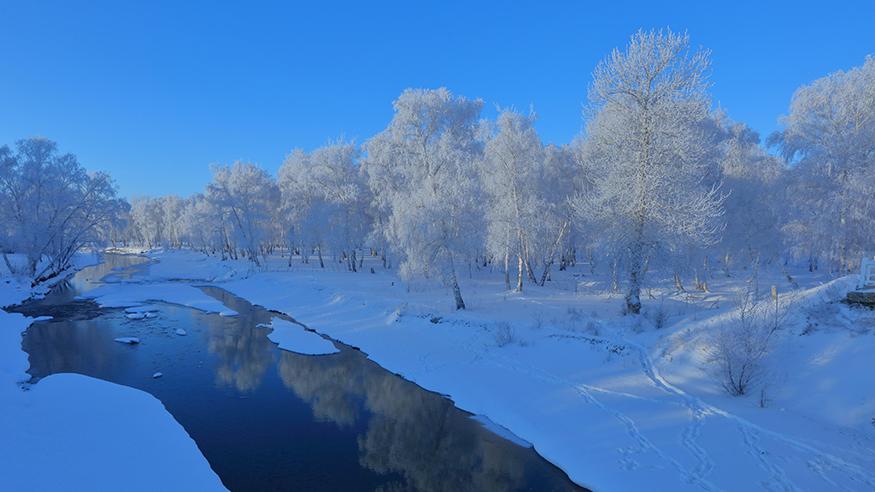China's Qinghai Lake has been expanding in size for past 20 years
Qinghai Lake, the largest inland saltwater lake in China, has been expanding in size continuously for the past 20 years. The latest satellite remote sensing found that the lake's water surface had reached 4650.08 square kilometers, a year-on-year increase of 28.1 square kilometers.
The recovery of the lake surface area is attributed to the local ecological restoration efforts and ongoing management and protection of the water ecosystem in recent years.

Photo taken on July 2, 2024 shows tourists visiting the Qinghai Lake scenic area. (People's Daily Online/Sun Lijun)
"Over the past 20 years, the warming and increased humidity on the Qinghai-Xizang Plateau has led to higher average temperature and rising rainfall in the Qinghai Lake basin," said Sun Jianqing, an official with the Qinghai Lake National Nature Reserve Administration.
"More importantly, we have been beefing up ecological restoration and comprehensive sand and water management of the Qinghai Lake basin," Sun added. The water quality in the main area of Qinghai Lake has consistently remained good over an extended period.
According to Shi Derong, an engineer at the grassland station in Haiyan county of Haibei Tibetan autonomous prefecture, northwest China's Qinghai province, Qinghai Lake's water level had experienced a reduction due to grassland degradation, land desertification, and river flow interruption.
To combat desertification, Qinghai adopted a sand control approach that focused primarily on preventing sand expansion while boosting afforestation. The province has restructured its tree species and successfully tested a range of practical technologies appropriate for high-cold sandy areas. Over 500,000 mu (33,333 hectares) of desertified land to the northeast of Qinghai Lake has been treated, with the overall coverage rate of grassland vegetation reaching 60 percent.
The continuous flow of streams into Qinghai Lake also provides a constant source of energy for the lake's expansion.
The Buha River, originating from the Qilian Mountains, is the largest tributary of Qinghai Lake and accounts for over 50 percent of the lake's water inflow.

Photo taken on June 24, 2024 shows an aerial view of the Qinghai Lake scenic area. (People's Daily Online/Bao Kangxuan)
Currently, China has approved a plan to establish a national park at Qinghai Lake. As part of the park's development, the headwater regions of inflowing rivers, ecologically fragile areas such as glaciers and permafrost, habitats of rare species, as well as the lake area, are all incorporated into core protection zones.
Over the past few years, the size of the Buha River basin has been on a steady increase, with the water quality consistently rated as excellent. How did local authorities manage to enhance the water quality while increasing the water volume?
A management system composed of the Qinghai Lake National Nature Reserve Administration, its branch offices and protection stations has been established in Qinghai Lake. Additionally, six protection stations have been put in place, carrying out special operations and daily patrols and monitoring to protect the water ecology.
Increasing biodiversity
Recently, an outdoor video monitoring platform run by the Protection and Utilization Administration of Qinghai Lake Scenic Area captured real-time footage - hundreds of overwintering swans walking back and forth in groups near a bird islet.
It is learned that during the establishment of the national park, three comprehensive observation stations have been set up at the Chinese national level and under the administration of Chinese Academy of Sciences. Besides, a research platform has been established with the concreted efforts of several parties. Over 300 ecological monitoring stations for water, soil, air, and wildlife have also been set up to supervise 24 major bird habitats, 13 Przewalski's gazelle activity areas, and 28 key ecological protection areas.
Today, Qinghai Lake has seen its ecological environment improved and biodiversity rapidly restored. The naked carp population has recorded a nearly 46-fold growth. A total of 281 bird species have been identified in the region, with an impressive 606,000 waterfowl making it their permanent home. Additionally, the number of the Przewalski's gazelle in the Qinghai Lake basin has risen from fewer than 300 in the early stages of conservation to over 3,400.

Photo taken on Aug. 21, 2024 shows tourists sailing on Qinghai Lake. (People's Daily Online/Yang Suping)
"Our ecological conservation efforts are manifested in 'three improvements and three reductions' - we have increased the areas of wetland, the coverage of high-density vegetation, and the overall ecological function, while reducing the areas of sandy, bare, and saline-alkali land within the protected zone. At the same time, within our protected zone, the functional land under protection remains unchanged," said Sun.
Booming ecological tourism
In Ha'ergai township of Gangcha county on the northern shore of Qinghai Lake, mushroom-shaped hotel buildings are favored by many tourists. There is also a rescue station for Przewalski's gazelle and a science museum close by.
In recent years, the Qinghai Lake scenic area has upgraded its tourism infrastructure, including transportation, service facilities, and parking lots, while also providing a wider range of ecological tourism products to enrich visitors' travel experiences.
Local residents are benefiting from the improved ecological environment. Sources say that the Protection and Utilization Administration of Qinghai Lake Scenic Area has adopted a collaborative approach to develop ecological tourism within the 12 approved scenic spots, featuring the participation of companies, cooperatives, and the public. This innovative model has contributed to local job creation, benefiting more than 20,000 residents in the eight neighboring townships.
"Over 60,000 people are living within the proposed boundaries of the national park at Qinghai Lake. We are planning to provide people in local communities with shares in cooperatives, which will encourage their participation and allow them to benefit from the park's development. In this way, we can pursue a well-coordinated approach in ecological protection and high-quality development," said Ma Tiancheng, deputy head of the Protection and Utilization Administration of Qinghai Lake Scenic Area.
Photos
Related Stories
Copyright © 2025 People's Daily Online. All Rights Reserved.









